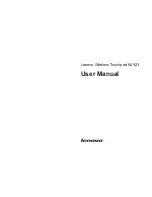
module when shipped from the factory.
●
Correct wiring scheme
When designing the system, avoid forming loops to minimize risk in the event of an indirect lighting strike.
Check that wiring is correct before starting the generator. If the measured open circuit voltage ( Voc) and
short-circuit current (Isc) differ from the specifications, then there is a wiring fault.
●
Correct connection of contact plug connectors
The plug connector has its own polarity. Make sure that the connection is safe and tight. The plug connector
should not receive outer stress. Otherwise, it is only used to connect the circuit!
●
Use of suitable material
Use cable extensions and plugs that are designed for outdoor application. Ensure that they are in perfect
electrical and mechanical condition. Use only cables having one conductor. Select the appropriate cable
diameter to minimize voltage drop (to calculate the minimum cable diameter and the fuse, and to calculate
controls, multiply the Isc and Voc by a factor of 1.56).
If the module is connected to the control box, you must choose the control box with PVGZX0601-1 type
Connectors.
10
、
Bypass diodes
The type, voltage rating, current rating of the diodes are respectively 12SQ045 ,45V, 12A.
Partial shading of an individual module can cause a reverse voltage across the shaded module. Current is then
forced through the shaded area by the other modules.
When a bypass diode is wired in parallel with the series string, the forced current will flow through the diode
and bypass the shaded module, thereby minimize module heating and array current losses. Diodes are used as
bypass diodes:
Have a Rated Average Forward Current 20A Above maximum system current at highest module operating
temperature.
Have a Rated Repetitive Peak Reverse Voltage 50V Above maximum system voltage at lowest module
operating temperature.
There are six bypass diodes per module, and 20 cells per bypass diode
11
、
Battery
When solar modules are used to charge batteries, the battery must be installed in a manner which will insure t the
performance of the system and the safety of the users. The battery should be away from the main flow of people
and animal traffic. Select a battery site that is protected from sunlight, rain, snow, debris, and is well ventilated.
Most batteries generate hydrogen gas when charging, which is explosive. Do not light matches or spark near the
battery bank. When a battery is installed outdoors, it should be placed in an insulated and ventilated battery case
specifically designed for the purpose.
12
、
Maintenance and cleaning
●
Do not change the PV components optionally (diode, junction box, plug connectors )
●
Given a sufficient tilt (at least 15°), it is not generally necessary to clean the modules (rainfall will have a
self-cleaning effect). In case of heavy soiling (which will result in output reductions), we recommend cleaning the




























